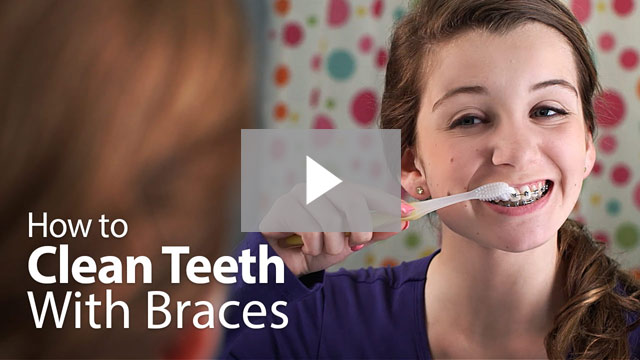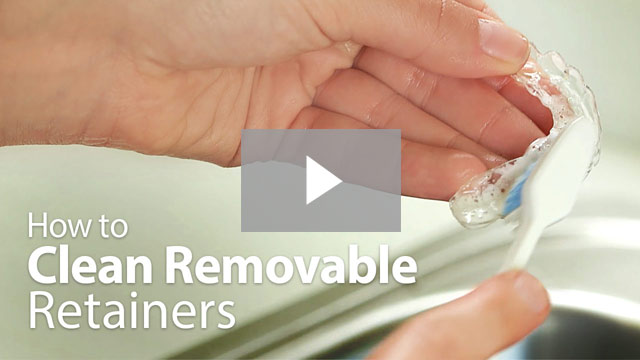What is Orthodontics?
One of the bite problems that is most detrimental to facial esthetics is the deep overbite, which refers to the almost complete overlapping of the upper front teeth over the lower front teeth. Frequently, the edges of the lower teeth actually bite into the gum tissue of the upper palate. The treatment of choice for deep overbite is orthodontics.
Some tooth wear is a natural function of aging. As long as it doesn't change your bite, it isn't a functional problem. Occasionally, however, tooth wear causes major bite disorders. For example, extreme erosion in the back of the mouth can result in a "collapsed bite." The inadequate tooth structure causes a partial disintegration of the lower facial tissue, which results in an aged appearance, as if the person had no teeth. This problem can exist even in young people.
If the closed bite is not too severe, the back teeth often can be built up with crowns or onlays, which allows the front teeth to be bonded or crowned. However, opening the bite through orthodontic treatment is typically the best bet. Restorative procedures such as crown and bridge or bonding then can be performed after orthodontic treatment is complete. Orthognathic surgery also may be required if the lower jaw needs to be repositioned.
In a normal bite, the upper teeth slightly overlap the lower teeth. A crossbite results when the opposite occurs, or when the lower teeth overlap the upper teeth. It can occur in both the front and back teeth. When a crossbite develops in the front teeth, the result is an unattractive protruding chin.
Although full crowns or composite resin bonding often can be used to "build out" the upper arch, this treatment only lends itself to a limited amount of esthetic modification. The best way to correct a cross-bite is through orthodontics.
If the crossbite is particularly severe, orthognathic surgery, as well as orthodontics, may be required. This combined approach can result in a dramatic improvement in facial appearance. Best of all, the teeth tend to remain in their new positions once the condition is corrected.
is a way of straightening or moving teeth, to improve the appearance of the teeth and how they work. It can also help to look after the long-term health of the teeth, gums and jaw joints, by spreading the biting pressure over all the teeth.
Many people have crowded or crooked teeth. Orthodontic treatment will straighten the teeth or move them into a better position. This can not only improve their appearance but also the way the teeth bite together, while also making them easier to clean.
In some patients the upper front teeth can stick out and look unsightly. These prominent teeth are more likely to be damaged, but orthodontic treatment can move them back into line. In others, the way the upper and lower jaws meet can cause teeth to look unsightly and lead to an incorrect bite. Orthodontic treatment may be able to correct both.
When the teeth dont meet correctly, this can put strain on the muscles of the jaw, causing jaw and joint problems and in some cases headaches. Orthodontic treatment can help you to bite more evenly and reduce the strain.
Orthodontic treatment is generally best carried out in children, but adults can have orthodontic treatment too and more and more are doing. Age is less important than having the proper number of teeth. In children it may be necessary to wait for enough teeth to come through before starting treatment.
Any dentist may carry out orthodontic treatment. Or the dentist may send the person to a specialist who has extra qualifications. The specialist may be in a practice or in a hospital department, and is called an orthodontist.
The most important thing is to have a full examination. This will usually involve looking at your teeth, taking x-rays and making plaster models of your teeth.
Your dentist or orthodontist will then discuss what treatment is possible. Once you are sure you want to go ahead, the treatment can begin as soon as you have enough permanent teeth.
You may not have enough room for all your permanent teeth and so it may be necessary to take out some permanent teeth to make space. Your dentist will tell you whether this is the case. Sometimes space can be created using other forms of treatment.
Related Orthodontic Articles
The orthodontic treatment using clear aligners consists of a series of aligners that you change about every two weeks over a course of treatment lasting six to eighteen months depending on how much movement is needed... Read Article
Teens who regard traditional braces as restrictive, confining, and obstructive to their lifestyles now have another choice for orthodontic treatment: clear aligners. This advanced dental technology, originally geared toward adults, has recently evolved to treat a greater variety of bite problems in younger people. These improved orthodontic appliances can help teens function normally during a difficult phase of life... Read Article
Proper alignment of the teeth is basic to "Smile Design." Their position dictates how they work together and affects the way you look and smile. Only orthodontic treatment can move teeth into the right position. Simply put, when things look right, they probably are right. Learn the basics of smile analysis and design and whether the magic of orthodontics will work for you... Read Article
Orthodontics for the Older Adult
Healthy teeth can be moved at any age, so there's no such thing as "too old" for braces. In fact, nowadays about one out of every five orthodontic patients is an adult. Yet this figure represents only a small portion of adults who could actually benefit from orthodontic treatment... Read Article







